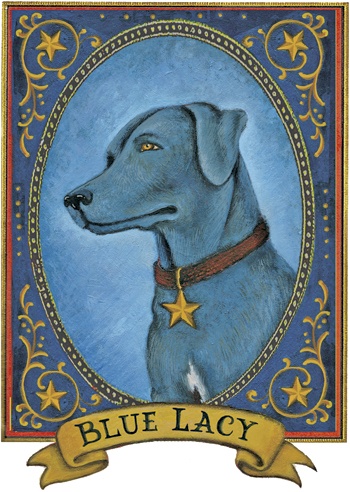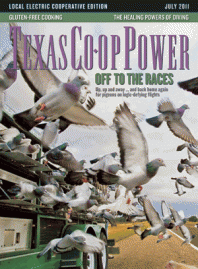The Legislature declared the Blue Lacy the official dog breed of Texas on May 25, 2005, making the state only one of 11 in the U.S. to award a canine breed that honor.
The Blue Lacy, the only dog to originate in Texas, is an energetic, hard-working breed that was brought up on a Burnet County ranch under the supervision of a historic Central Texas family.
House Concurrent Resolution No. 108 describes the Blue Lacy, in part, as “a Texas native, a working dog bred to play an essential role in ranch operations, at a time when the ranches themselves became one of the iconic Texas symbols, and a dog that has more than pulled its weight on many a Texas spread.”
The beginnings of the Blue Lacy breed date to 1858, when the Lacy brothers moved from Kentucky to Granite Mountain near the present-day Texas city of Marble Falls. Just 12 years had passed since the U.S. formally annexed Texas, and Burnet County’s population was about to reach 2,487 residents when Frank, George, Ewin and Harry Lacy took up masonry and ranching in the shadow of Granite Mountain’s 869-foot dome.
The brothers quarried and sold granite from the mountain. In 1885, George Lacy was one of three businessmen who donated the stone—dubbed sunset red granite for its pinkish hue—to build the state Capitol in Austin.
The Lacys’ ranching operation included raising free-range cattle and hogs. The hogs, fueled by a rich diet of acorns and berries, multiplied among the miles of unfenced land like mice in a grain bin.
Moving cattle and hogs to market in the mid-19th century was a labor-intensive operation accomplished on horseback with the help of dogs. It didn’t take the Lacy brothers long to notice that while many breeds of herding dogs could move cattle, the process of gathering hogs and getting them to market was another story.
Hogs often refuse to turn and run like cattle; instead, they face their opponents and fight. It takes a gritty, aggressive dog to confront an angry boar, and the Lacy brothers needed a dog that was tough enough to handle the job. They began with a mix of greyhound—a breed that trails by sight—and scent hound for superior tracking ability. Finally, they added a touch of a wild canine—reportedly the coyote or wolf—for quick wits and drive.
Over time, the brothers refined the breed, developing a high-energy dog that is happiest when it has a job, whether it’s herding cattle or hogs or following a scent trail.
In a report by the National Lacy Dog Association, Helen Lacy Gibbs, granddaughter of George Lacy, recalls her father rounding up hogs with descendants of the original Blue Lacys during the Great Depression. “We didn’t drive the hogs,” she says. “We just followed as the dogs led them to the pen.”
She describes how the dogs would nip the hogs and then run toward the pen, dodging the slashing tusks of the hogs in wild pursuit. A hole high in the fence on the opposite side of the pen allowed the dogs to jump out after they led their pursuers inside. The ranchers followed, closing the gate behind them. The Lacy brothers used this method in taking their hogs downstream along the Colorado River to a packinghouse they owned in Austin.
“They are powerful dogs,” says Marlo Riley, the great-great-granddaughter of Frank Lacy. “They have a surprising intelligence that convinces me they are capable of reasoning. It’s a common saying that one Blue Lacy can do the work of five mounted cowboys.”
Riley also manages the Lacy Game Dog Registry, keeping track of bloodlines and gathering photographs and documents to record the Blue Lacy’s history. The descendants now number more than 1,000 dogs. But at one point over their 150-year-history, Blue Lacys almost became obsolete.
When pork producers began to pen their hogs and feed them corn, the need for the dogs’ unique abilities diminished. But in 1975, a renewed effort to save the breed emphasized their value for hunting and search-and-rescue work. Since then, Blue Lacy numbers have steadily increased. The recent explosion of Texas’ feral hog population has also helped boost the dogs’ popularity as hunting companions.
“The Lacy brothers did fine work, and the breed is unique and special to many,” Riley says.
——————–
Martha Deeringer is a frequent contributor to Texas Co-op Power.


